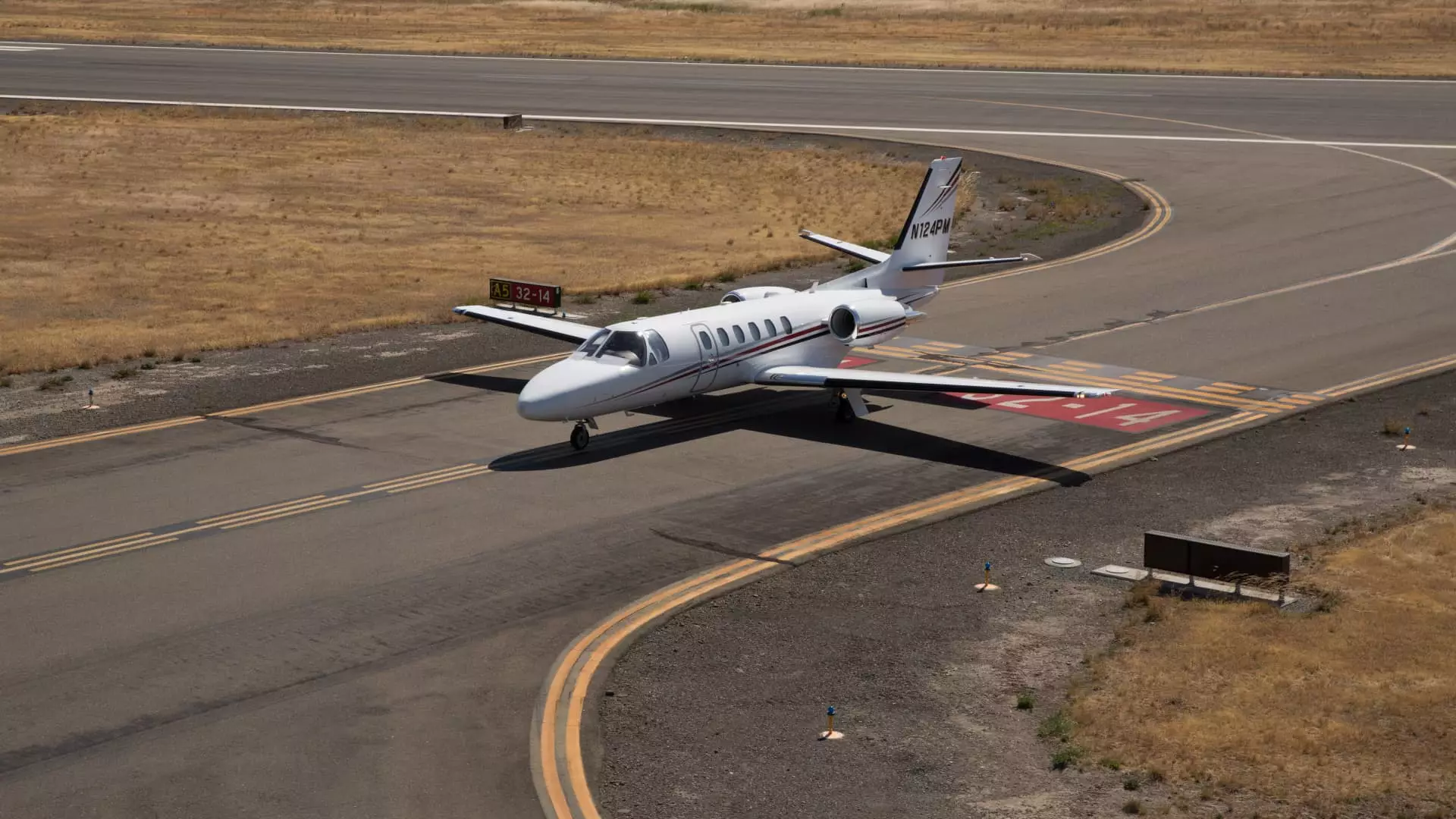In recent months, the once-untouchable domain of luxury air travel is now navigating turbulent skies. According to a recent report by Barclays, consumer confidence has plummeted, leading to a significant downturn in demand for business jets. A staggering 49% reduction in interest from potential buyers has shaken the foundation of the private aviation market. This decline was unearthed from a survey conducted among 65 brokers and financiers deeply entrenched in the world of private aircraft sales. The implications of this decline extend far beyond the realm of personal wealth and luxury; they evoke serious questions about the overall economic landscape.
What distinguishes this current downturn from previous hiccups in the luxury sector is its depth. The composite score derived from five critical metrics has dropped from a favorable 52 to a concerning 40, signaling a severe slowdown. Barclays’ analyst, David Strauss, expressed his shock regarding the magnitude of this plunge, indicating that expectations of a decline were present, yet the reality has far exceeded these anticipations. A low score in the 40s hints at worrisome trends, correlating closely with airplane manufacturers’ book-to-bill ratio—a barometer of corporate well-being that quantifies incoming orders against fulfilled ones. This dissonance could spell disaster as companies scramble to adapt to a rapidly shifting market landscape.
The Impact of Tariffs on Business Decisions
One of the more dubious culprits behind this decline is the pervasive uncertainty surrounding tariffs. During the survey, a staggering 93% of respondents indicated that they anticipated tariffs would negatively impact demand for new aircraft. This reveals an ominous cloud hanging over the aviation industry, as prospective buyers delay or entirely discard their purchase plans, gripped by fears not only about tariffs but how broader economic issues will affect their enterprises. Almost half of the brokers reported a deterioration in customer interest since March, indicating that even well-heeled clients are now retreating into their shells.
While it’s easy to dismiss a slowing jet market as a problem confined to the affluent, it strikes at the heart of economic health. The uncertainty experienced by business jet buyers indicates broader apprehensions about the economy’s direction. People investing in jets are not doing so merely as symbols of wealth; these purchases signify confidence within the larger economy. As that confidence wanes, so too do the prospects for growth across interconnected industries.
The Silver Lining of Legislative Change
However, all is not lost for the aviation sector. The potential passage of favorable legislation might provide a lifeline to beleaguered business jet manufacturers. Both the Senate and the House of Representatives recently endorsed a budget resolution aimed at extending the Tax Cuts and Jobs Act. Central to this tax provision is the capability for businesses to immediately deduct 100% of eligible equipment purchases, a strategy that could radically alter purchasing decisions concerning business jets.
Notably, this legislation has received backing from Republican lawmakers, reflecting an intriguing alignment of interests within a polarized environment. Should this tax provision come to fruition, it would provide a much-needed stimulus to the aviation sector—one that the industry desperately craves amid waning demand. Furthermore, retroactive tax deductions could push those possibly on the fence about buying an aircraft into action, catalyzing renewed interest in transactions.
The Future: Cautious Optimism or Fearful Retreat?
As the business jet market grapples with its current hurdles, the question remains: will this moment of uncertainty foster innovation and adaptation, or will it lead to a retreat into cautiousness and inaction? The contrasting sentiments regarding new and used jets underline the precarious nature of this industry. While nearly two-thirds of brokers are pessimistic about future demand, a small but significant cohort believes that the market for used jets could endure an uptick, albeit a modest one.
This cautious optimism may hinge on external factors beyond just political maneuvering. The interplay between global economic trends, consumer sentiment, and manufacturing capabilities will ultimately shape the aviation landscape moving forward. As we witness luxury travel adapting to new challenges, it is evident that the skies are far from clear. The question that looms large is whether the industry’s resilience will be enough to weather this storm or if it will serve as a harbinger of a more profound decline.

Leave a Reply